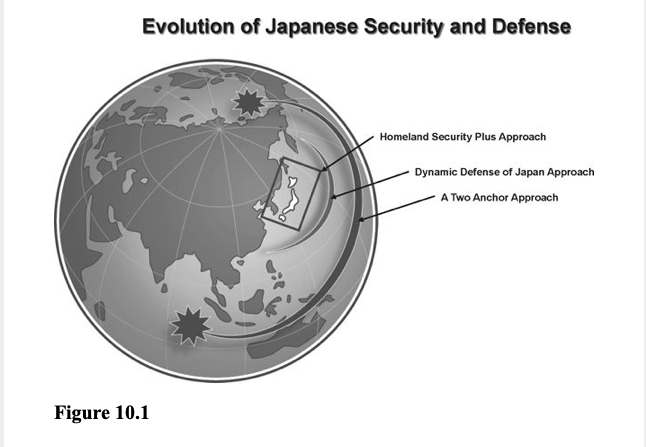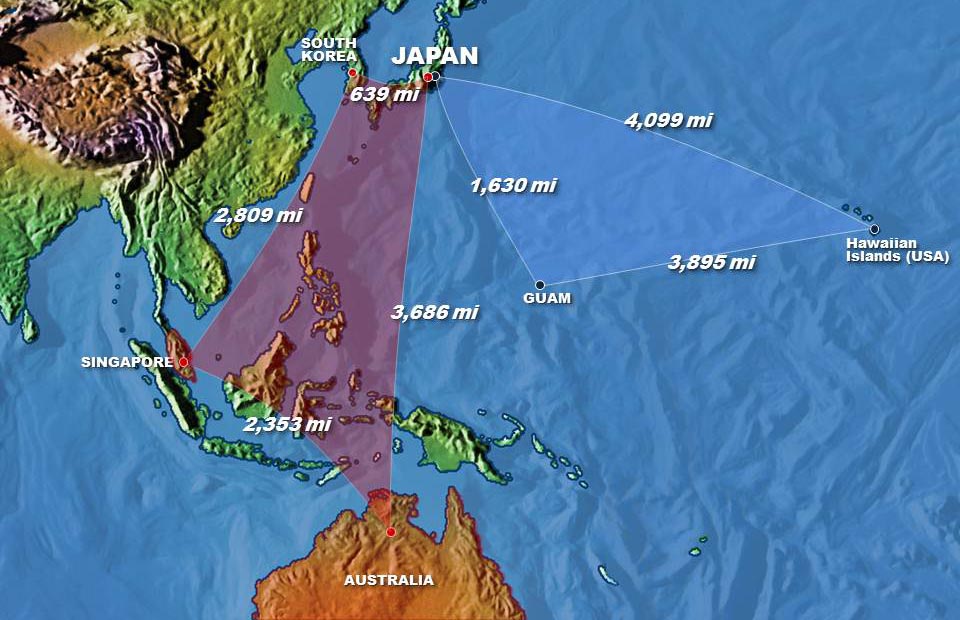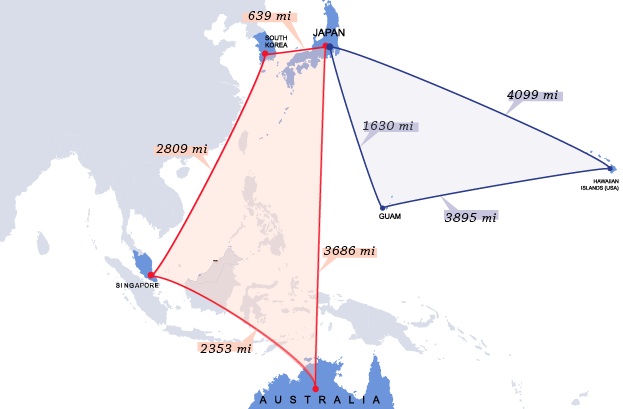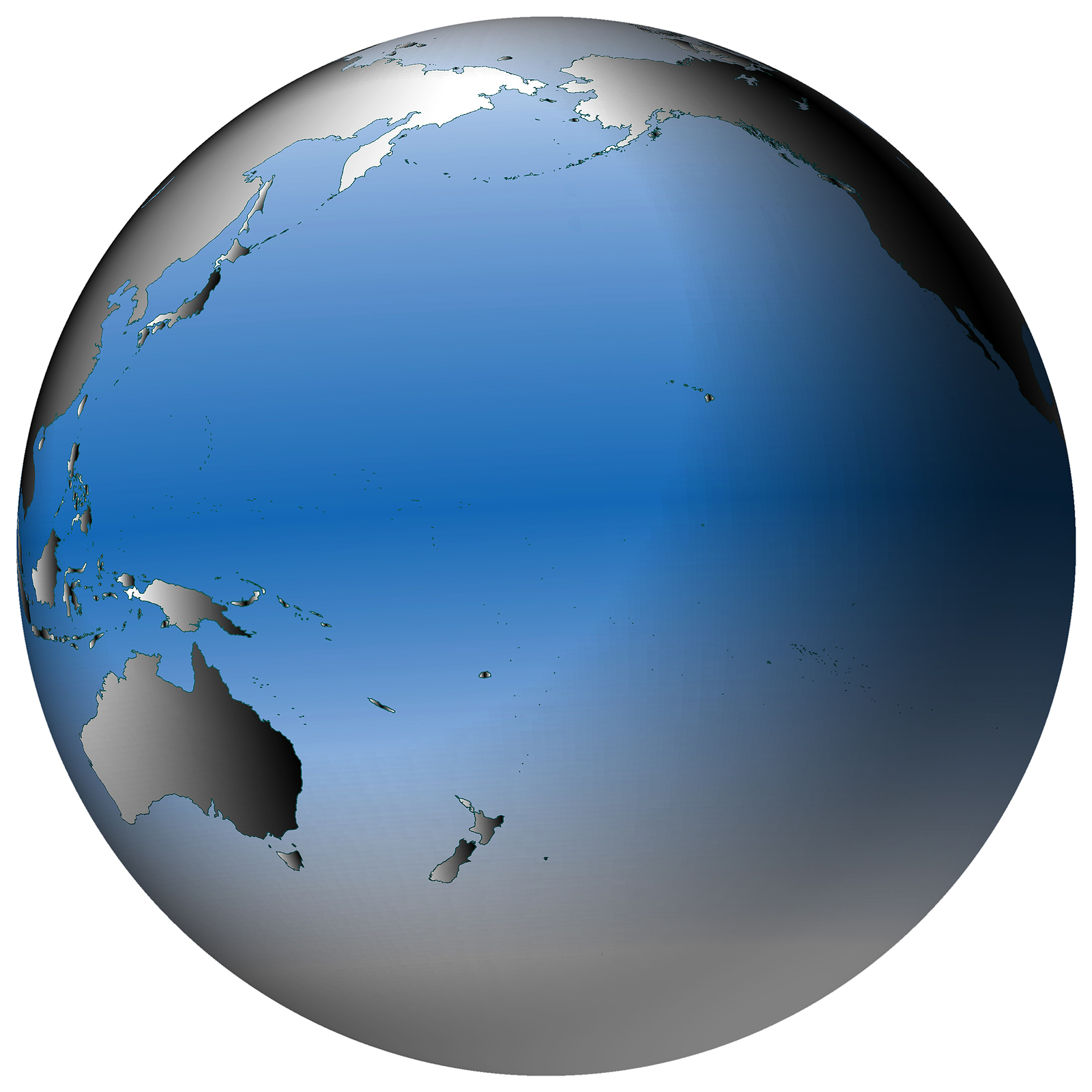A Look at Strategic Geography for Pacific Defense: Putting the Chinese Military Challenge Into Strategic Context
The Chinese Communist Regime led by “lifetime” leader Xi Jinping has enhanced its military capabilities as part of it overall rise to regional and then global power.
Notably, it has not led with the use of military power as its key instrument, but has combined manufacturing growth, supply chain dominance (enabled by the Western approach to globalization), investments within the West and the Third World, along with sophisticated means for political influence and information war.
And they have built a significant nuclear force underlying their ability to enhance direct defense of the mainland.
How then best to counter the Chinese challenge?
Clearly, the military aspect of this is contextual and not the sole element of the challenge.
A multi-faceted response by the allies and the United States is clearly necessary to reshape the world in ways that constrain Chinese behavior and protect the interests of the liberal democracies.
We have discussed a wider range response to China in a report which we published three years ago with the help of the late Danny Lam.
The point then and now is that a wide range of responses are required, rather than a narrowly focused “great power” defeat the Chinese in their homeland military strategy or how to operate inside the littorals of the Chinese mainland which some American military leaders seem to be espousing.
In any case, such a strategy will prove counterproductive for shaping the kind of coalition which can attenuate Chinese influence within the Pacific region.
China is a significant nuclear power, as is the United States.
Any direct threats to either sides homelands will certainly lead to nuclear use of some kind.
And the question then is how nuclear weapons when weaved with the kind of conventional capabilities being built to disrupt adversarial command and control will play out in any calculation for nuclear use or the conduct of nuclear tipped conventional operations.
This means that any Western strategy which operates within the Chinese projected first island chain raises these kinds of nuclear engaged conventional operations, or with inside the perimeter of our closest allies, the Japanese and the Australians or against American core force generation areas, notably the littorals of the United States, which certainly since Pearl Harbor start with Hawaii.
We have seen as well the expansion of what analysts refer to as gray zone activities in which the Chinese are engaged in the Pacific.
But from my point of view, both gray zone ops and hybrid war ops are part of a broader strategic reality, namely, the nature of crisis management facing the liberal democracies competing with the authoritarian states in a peer-to-peer competition.
The challenge can be put bluntly — deterrence has been designed on the Western side with large scale engagement of enemy forces in mind.
What if deterrence in this sense is the necessary but not sufficient capability to constrain the actions of the authoritarians?
What if you can deter from full scale war, but by so doing not be able to control what your adversary is doing in terms of expanding his global reach and reshaping the strategic environment to his benefit?
What if you have organized yourself for deterrence but not effective crisis management?
What if the US and its key allies are not willing or able to respond and the Chinese expand their approach over time?
How do we constrain Chine, and not just deter it?
What we clearly do not want to do is what President Obama did — namely, to draw a red line in the sand and have it blown away by the actions of adversaries who simply are not deterred by the prospects of total war perceived to be in the distant future or a risk calculus that does not have effective intervention forces available at the leverage point early in the process of crisis management.
One way to look at shaping an effective inter-allied approach is to overlap three strategic geographies and to shape interlocking air, maritime, and relevant land force capabilities into a defense grid from which power can be projected to push back against Chinese incursions into the Pacific.
And to do so without triggering the threat of CO-Nuclear war (Co-mingled conventional means to support limited nuclear war fighting).
There are four critical overlapping strategic geographies which can be looked at from this point of view: the first island chain for Australia, the expanded outer perimeter for Japanese defense and the strategic triangle for the U.S. for force generation and with the strategic quadrangle for U.S. and allied power projection into the regional force engagement effort to influence Chinese behavior.
Australia’s First Island Chain
In a recent article by Brian Weston, a board member of the Sir Richard Williams Foundation, published in the Australian Defence Business Review, the author highlighted the importance of the first island chain to shaping an effective Australian defense and deterrent strategy for Australia.
In the graphic below, Weston highlighted both China’s first island chain (seen in the yellow markings) and Australia’s first island chain (seen in the white).
The red zone indicated covers what I would consider the joint expanded Japanese perimeter and the strategic triangle for operating U.S. forces for power projection in the region.
From the red and white dotted lines are what we would consider to be the strategic quadrangle, which is discussed later in the article.

Weston argued that a 21st century concept of Australia’s first island chain could be defined as stretching form Sri Lanka, along the Indonesian archipelago from Sumatra and Java, to Irian Jaya through Papua New Guineas and the Solomon Island, and on to Vanuatu and Fiji. Obviously, this theater of operation is primarily maritime, but given the nature of the force rebuild ongoing in the ADF it is an area of air-maritime-land operations understood in terms of the capabilities of an evolving integrated distributed force.
The author argued “military operations within this area play to Australia’s strengths of high levels of professional military mastery, and an aptitude for the exploitation of technologically advanced capabilities.
“Australia’s continuing investments in surveillance, reconnaissance, information and intelligence capabilities is key to the successful conduct of sub-surface, surface and above-surface maritime operations.”
By having a solid capability to operate within the first island chain, and to do so by building out an integrated distributed force, the ADF can cross link with the U.S. and Japanese allied forces to operate within the strategic quadrangle as needed by the allied force or desired by Australia’s decision makers.
Japan’s Expanded Perimeter Defense
In our 2015 book on Pacific defense, a key part of the analysis revolved around the reshaping of Japan’s defense concept.
The Japanese concept for the dynamics of change was the need for a new “dynamic defense” concept in which the SDF was able to integrate much more effectively with new 21st century capabilities such as acquiring Ospreys, F-35s and rebuilding their Navy to be able to extend the perimeter of their defense beyond a narrow concept of homeland defense.
At the same time, the approach has been clearly constrained due to historical memories and experiences, but it is about shaping greater air land, maritime integration to provide for a “defense bubble” over the nation and one which can interoperate with its closest ally the United States, but also reach out to Australia in their mutually expanding relationship.
One of the key features of our appraoch was and continues to be how to leverage the new systems we are already bringing on line which allows us to expand our deterrence in depth capabilities.
There is way too much emphasis Inside the Beltway on hypothetical wartime futures, rather than taking a hard headed look at the full spectrum crisis management challenges facing us now and into the decade ahead and military capabilities be interlinked with appropriate allied and national political strategies.
To get the world in 2050 without domination by the authoritarian powers, we have to effectively engage in co-opetition with them in the decade ahead, and exercise the kind of military capabilities which empower political engagement and effective crisis management.
We argued in our 2103 book on Pacific strategy, that Japan would work to enhance its perimeter defense and move eventually towards what we called a two anchor appraoch.
We argued that expanded perimeter defense is a key part of what we referred to as the “dynamic defense” phase in Japanese policy.
We argued that “this meant greater reach of Japanese systems., better integration of those systems within the Japanese forces themselves, more investments in C2 and ISR, and a long-term strategy of reworking the U.S.-Japanese military relationship to have much greater reach and presence.
“The dynamic defense phase carries with it the seeds for the next phase — the shaping of a twin-anchor policy of having reach in the Arctic and the Indian Ocean.
“Obviously, such reach is beyond the capabilities of the Japanese themselves and requires close integration with the United States and other allies.
“And such reach requires much greater C2, ISR and weapons integration across the Japanese and allied force structure.”
In the graphic below, the box highlights the expanding perimeter of defense in which the defense bubble needs to operate.
But as they build out more effective forces, ones which are capable of integrability, they can enhance as well their capabilities to operate with allies in defending the Northern and Southern reaches of their defense concerns as well.,

The Strategic Triangle and Quadrangle
The tyranny of distance and the challenge of providing persistent presence will be beyond the kin of the United States with declining assets in the 21st century, if 20th century concepts of operations persist.
What is needed is another look at geography and another way of thinking about military approaches with allies and collaborative technologies.
One way to think about this is to look at the forward side of the Pacific. The closer in side of the Pacific from Hawaii back involves the defense of the littorals and the key roles of Alaska and the Artic.
Looking west of Hawaii, the United States operates in two strategic geometries.
The first strategic geometry involves the triangle from Hawaii to Guam to Japan. This triangle is at the heart of the ability of the U.S. to project power into the Western Pacific.
With a 20th century approach which is platform centric and rooted in step by step augmentation of force, each key part of the triangle needs to be populated with significant numbers of platforms which can be pushed forward.

To be clear, having capability in this triangle is a key element of what the United States can bring to the party for Pacific operations, and remains fundamental.
But with a new approach to an attack and defense enterprise, one would use this capability differently from simply providing for PUSH forward and sequential escalation dominance.
Rather than focusing simply on the image of projecting power forward or planning to operate against China based on primarily trying to operate within the Chinese first island chain, the enablement of a strategic quadrangle in the Western Pacific is crucial to any successful allied or American Pacific defense and security strategy.
Competition among allies in the Western Pacific is historically rooted and as a former 7th USAF commander underscored, “history still matters in impeding allied cooperation.”
In spite of these challenges and impediments, shaping a strong collaborative quadrangle from Japan, to South Korea, to Singapore to Australia can shape new possibilities.
Enabling the quadrangle to do a better job of defending itself and shaping interoperability across separate nations has to become a central strategic American goal.
This will require significant cultural change for the United States.
Shaping capabilities to operate in both in the 21st century will see the need to craft an effective synergy between U.S. and allied assets, or we will suffer a Ben Franklin moment: “We will all hang separately or we will hang together.”

This version of the graphic was included in the AOL Defense now Breaking Defense article some years ago.Rather than thinking of allies after we think about our own strategy, we need to reverse the logic.
The intersection of the various strategic geographies needs to become a key focus for strategic attention.
Without enabled allies in the Western Pacific, the United States will simply NOT be able to execute an effective Pacific strategy. Full stop.
The quadrangle of Japan, South Korea, Australia and Singapore can be populated by systems, which enable the shaping of a C2/ISR grid that can able a honeycomb of deployed forces, ones which are integratabtle on demand to deal with crisis management tasks and capable of scalability to the level required for escalation management.
The population of the area with various sensors aboard new tankers, fighter aircraft, air battle managers, UAVs or aboard ships and submarines creates the pre-condition for shaping a powerful grid of intersecting capabilities.
Indeed, an attack and defense enterprise in the Western Pacific can be shaped which the United States can easily plug into, if indeed interoperability and mutually leveraging one another’s capabilities is seen as the strategic goal of the new Pacific strategy.
This will require culture change, and not only by the Asian powers.
Conclusions
With the Australians and Japanese reshaping their perimeter defenses, the U.S. engagement within those perimeter defenses as well as strengthening U.S. capabilities to enhance and protect its forces within the strategic triangle is a priority.
To be clear, an ability to defend the perimeter is the first priority. Shaping a solid defense grid which is a barrier to Chinese adversarial operations inside the perimeter is crucial to Pacific defense.
By doing so through enhanced inter-connectedness among the there three national forces, allows the coalition to defend more effectively their operational needs and strategic interests to operate in the strategic quadrangle.
Enhancing the capability to dissuade the Chinese from threatening the interests of the liberal democracies in the strategic quadrangle is crucial and its from those enclaves that we can collectivity operate to constrain, deter, and deflect the Chinese as the operate outward from the first island chain.
The question then remains how best to deal with the Chinese within the first island chain, understanding that this is a CO-Nuclear zone but is very unlikely to be an area from which one would credibly plan to attack China directly.
That is best left to appropriate longer range strike assets as needed or desired; whether launched from land, underwater or surface platforms, or from aircraft.
Shaping an appropriate strike mix to defend the defense perimeter but to be able as well to project power into the strategic quadrangle is a focus of the strike and defense enterprise going forward this decade.
Also, see the following:
Rethinking-China-Policy-1

